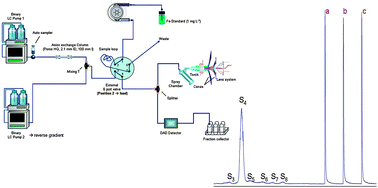Absolute quantification of transferrin in blood samples of harbour seals using HPLC-ICP-MS†
Abstract
Harbour seals (Phoca vitulina) are bio-

* Corresponding authors
a
Helmholtz-Zentrum Geesthacht, Institute for Coastal Research, Marine Bioanalytical Chemistry, Max-Planck-Str. 1, 21502 Geesthacht, Germany
E-mail:
mechthild.grebe@hzg.de, daniel.proefrock@hzg.de
b University of Hamburg, Department of Chemistry, Institute for Inorganic and Applied Chemistry, Martin-Luther-King-Platz 6, 20146 Hamburg, Germany
Harbour seals (Phoca vitulina) are bio-

 Please wait while we load your content...
Something went wrong. Try again?
Please wait while we load your content...
Something went wrong. Try again?
 Fetching data from CrossRef.
Fetching data from CrossRef.
This may take some time to load.
Loading related content
